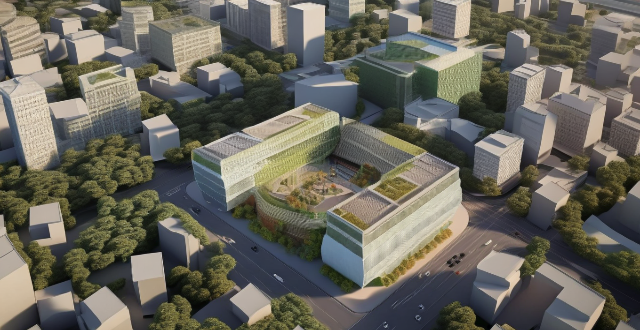Energy-efficient buildings are crucial in the construction sector for reducing carbon emissions, which contribute significantly to global warming and climate change. The importance of urgent action is emphasized by the IPCC's warning about the limited timeframe to limit global warming to 1.5°C above pre-industrial levels. Energy-efficient buildings can reduce energy consumption, lower energy bills, improve comfort and health, and contribute to long-term sustainability. Strategies for achieving energy efficiency include passive design strategies, high-performance building envelopes, advanced HVAC systems, retrofitting existing buildings with energy audits and renewable energy sources. Collective action from various stakeholders is necessary to make significant progress towards a sustainable future.

Energy-Efficient Buildings: A Key to Reducing Carbon Emissions in the Construction Sector
Introduction
The construction sector is a significant contributor to global carbon emissions. However, energy-efficient buildings can play a crucial role in reducing these emissions. This article will discuss how energy-efficient buildings contribute to reducing carbon emissions in the construction sector.
Importance of Reducing Carbon Emissions
Global Warming and Climate Change
Carbon emissions are one of the primary causes of global warming and climate change. The increase in atmospheric carbon dioxide levels traps heat, leading to rising temperatures and changing weather patterns. This has far-reaching consequences for ecosystems, agriculture, and human health.
Urgency of Action
The urgency of reducing carbon emissions cannot be overstated. The Intergovernmental Panel on Climate Change (IPCC) has warned that we have only a few years left to limit global warming to 1.5°C above pre-industrial levels. Beyond this point, the impacts of climate change become increasingly severe and irreversible.
Role of Energy-Efficient Buildings
Energy Consumption in Buildings
Buildings account for a significant portion of global energy consumption. Heating, cooling, lighting, and appliances all require energy, which often comes from fossil fuels. By making buildings more energy-efficient, we can reduce the amount of energy needed to operate them, thereby reducing carbon emissions.
Benefits of Energy-Efficient Buildings
Lower Energy Bills
Energy-efficient buildings typically have lower energy bills, as they require less energy to maintain comfortable temperatures and adequate lighting. This can lead to significant cost savings for building owners and occupants.
Improved Comfort and Health
Energy-efficient buildings often provide a more comfortable and healthier environment for occupants. Proper insulation, ventilation, and lighting can improve indoor air quality and reduce the risk of respiratory illnesses and allergies.
Long-Term Sustainability
Investing in energy-efficient buildings can also contribute to long-term sustainability. As renewable energy sources become more prevalent, buildings designed with energy efficiency in mind will be better equipped to take advantage of these technologies.
Strategies for Achieving Energy Efficiency in Buildings
Design and Construction
Passive Design Strategies
Passive design strategies involve using the building's orientation, layout, and materials to maximize natural heating and cooling. This can include features such as large windows facing south (in the northern hemisphere) to capture sunlight, or using thermal mass materials that absorb heat during the day and release it at night.
High-Performance Building Envelopes
High-performance building envelopes, including walls, roofs, and floors, can significantly reduce heat loss or gain. Insulating materials, such as foam insulation or reflective roofing, can help maintain a consistent internal temperature while reducing energy demands.
Advanced HVAC Systems
Advanced heating, ventilation, and air conditioning (HVAC) systems can optimize energy use by adjusting temperatures based on occupancy levels and external conditions. Smart thermostats and zoned HVAC systems allow for precise control over heating and cooling needs.
Retrofitting Existing Buildings
Energy Audits and Retrofit Plans
Energy audits can identify areas where existing buildings can be made more energy-efficient. Retrofit plans may include upgrading insulation, installing energy-efficient windows, or replacing outdated HVAC systems with more modern alternatives.
Renewable Energy Sources
Integrating renewable energy sources, such as solar panels or wind turbines, can further reduce reliance on fossil fuels and decrease carbon emissions. These technologies can provide clean energy directly to buildings or contribute to the grid's overall sustainability.
Conclusion
The Importance of Collective Action
Reducing carbon emissions in the construction sector requires collective action from governments, industry leaders, architects, engineers, and consumers. By prioritizing energy efficiency in new construction projects and retrofitting existing buildings, we can make significant strides toward a more sustainable future.